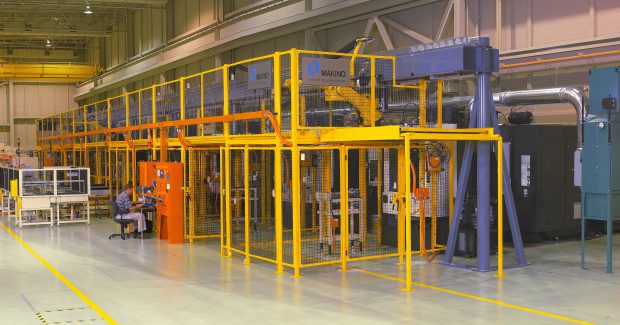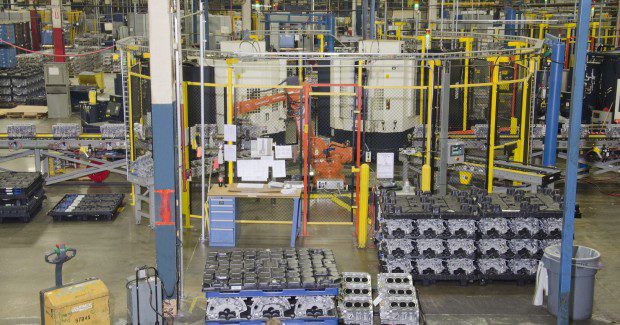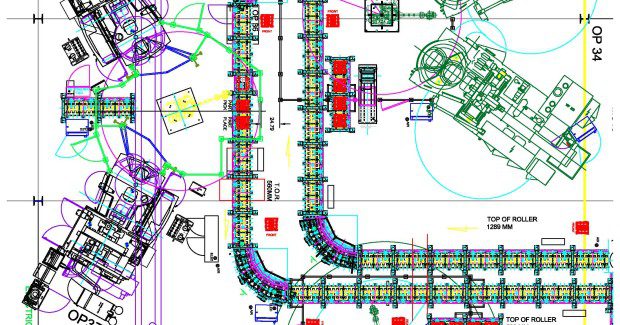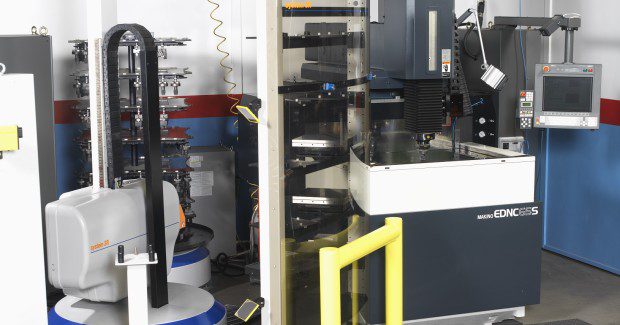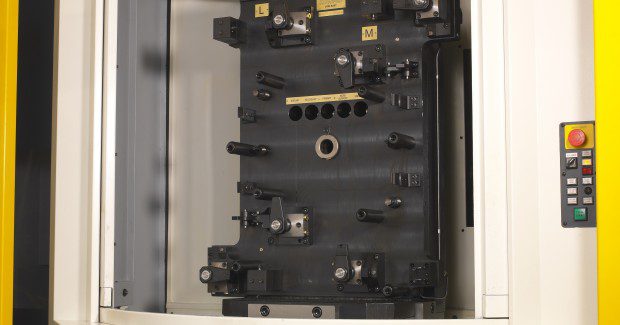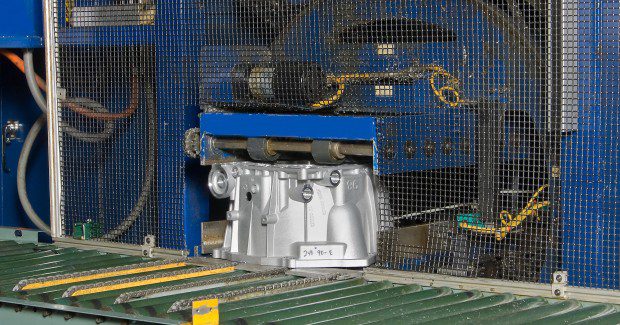How to Select a Single-Source Automation Supplier
Matching the automation to the need keeps a shop competitive, which is precisely why the selection of knowledgeable and experienced suppliers is equally or potentially more important than choosing the actual equipment.
Posted: July 31, 2015
BY DAVID WALTON
Suppliers play a crucial role in the delivery, performance and overall satisfaction of capital equipment, especially when it comes to automation. While automated systems provide numerous benefits to enhance and grow a business, the process of designing, specifying and integrating these technologies can be extremely challenging. This is why the selection of knowledgeable and experienced suppliers is equally or potentially more important than choosing the actual equipment.
TAKE A TURNKEY APPROACH
Oftentimes, business owners force themselves into a narrow list of suppliers by placing an emphasis on upfront investment costs or the use of existing, potentially outdated equipment. As a result, they soon find themselves spending valuable time managing multiple vendors rather than focusing on customer needs and growing the business. In order to prevent these issues, businesses should seek single-source automation suppliers that can ensure seamless deployment and integration of the following system components and processes:
- Purchasing
- Design
- Machinery
- Third-party equipment
- Material handling
- Application engineering
- On-time delivery
- On-site installation
- Test runs
- Training
- Post-production support
When working with a single-source automation supplier, manufacturers should expect the service of a dedicated project coordinator from the moment a request for quotation (RFQ) is submitted. This representative’s role is to coordinate every aspect of the project, from sourcing to servicing, for a comprehensive, cost-effective solution. This level of support is essential in simplifying installation, training and maintenance of the system, and it ensures that all objectives are met according to the original proposal during installation and post-installation phases. Manufacturers should expect the best solution for their application, with no compromises.
KNOWLEDGEABLE AND ACCOUNTABLE
No one wants to experience finger-pointing between suppliers, should an issue occur with the system. When companies require the highest levels of accountability in terms of technology, service and processes that effectively balance quality and cost, it’s critical that they identify an automation supplier with extensive knowledge and experience in these areas:
- A deep understanding of the markets a company serves
- Advanced expertise with machinery and automated systems
- In-depth process engineering capabilities
- On-site training, documentation and post-installation support
- Effective and responsive regional support
A single-source supplier ensures the system is up and running, and all equipment works cohesively over time. They should possesses extensive process and operation experience and have intimate knowledge of the machines, making sure that what is delivered is a tightly integrated system where the cutting process, machine control, robot, fixtures, interfaces and automation systems work together seamlessly. They ensure fast resolution of any engineering issues. Look for an integrated engineering group that has an established field record with proven experience in automating hundreds of machines with several types of robotic and cell controller platforms, one that assumes prime contractor responsibility for complete system installation and start-up.
Automation should be an integral part of the supplier’s business. The supplier should offer a comprehensive range of products with full system integration capabilities, in addition to having a dedicated team to execute the project, including project managers, personnel responsible for application and fixture engineering, machine process and option engineers, automation integration engineers and field service engineers for installation. These personnel need to be experienced in integrating auxiliary processes, like part identification, part deburr and inspection. They should also be familiar with overhead automation, robot end-of-arm tooling design and program development, the best ways to orient the machines and keeping the machines clear for easy access.
Equipment should include an interactive cell controller that is capable of performing the series of automated functions, such as an overview of the cell status, control robot start/stop and access to robot work area, gauge cycle counters, cell runout, part-type selection and part tracking.
The ability to provide this degree of engineering support in a single-source partnership is what enables a supplier to validate claims with guaranteed results, including cycle times, process capability index (Cpk) and cost per part that meet or exceed production goals. One of the most powerful benefits that a single-source supplier should provide is the elimination of stress and uncertainty that comes with self-managing multiple vendors independently.
In addition, financing an automated system can be simplified through the support of a single-source supplier. By consolidating investments down to one supplier, manufacturers can better visualize a return on investment (ROI) and rest assured that costs remain compliant with initial estimates.
TIMELY INSTALLATION
Long lead times can be costly when it’s necessary to react quickly to market opportunities. If a business is facing short lead time requirements for new equipment, it’s important that an automation supplier is capable of meeting deadlines for installation and deployment in order to initiate production runs on day one without delay.
With many parties coming in and out to install equipment, a single-source supplier can take on the brunt of the scheduling, communicating between all parties in order to handle tasks such as machine setup, tooling and probing. What many suppliers would consider unnecessary procedures during the integration phase can easily become origins for headaches and failure later in the systems’ life span. It pays to have a supplier that is mindful of details from all parties involved, ensuring the system as a whole reflects the same level of reliability for years to come.
HIT THE GROUND RUNNING
A single-source supplier delivers not only tightly integrated machining systems but also the support needed to get an automated system up and running immediately following installation. This factor is especially important when it comes to an automated cell; manufacturers need to understand how the system operates and become familiar with any advanced machining features, such as managing tool life, so they can begin focusing on profitable production time.
A supplier that offers robust on- and off-site system training opportunities and system documentation, including user manuals, schematics, drawings and models, can help operators to quickly understand and feel comfortable with the new equipment and processes. A supplier should accommodate training opportunities based on installation schedules in order to minimize downtime and make installation a productive period for operators.
Additionally, a quality supplier should not disappear after installation. Those providers who can bring post-installation recommendations and help optimize the system further bring more value to the investment and ensuring ROI on every job.

